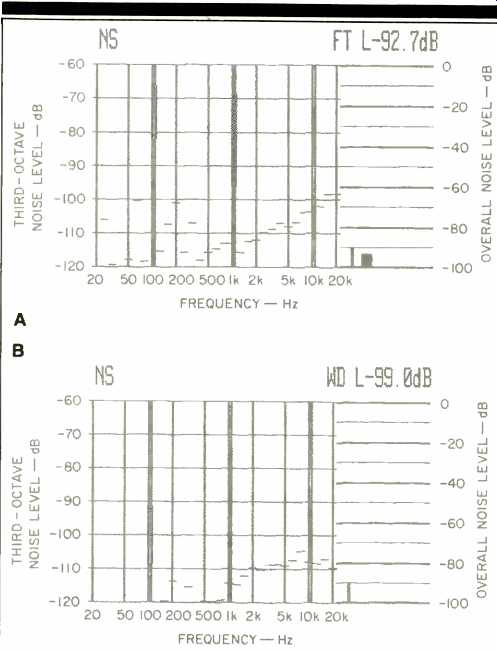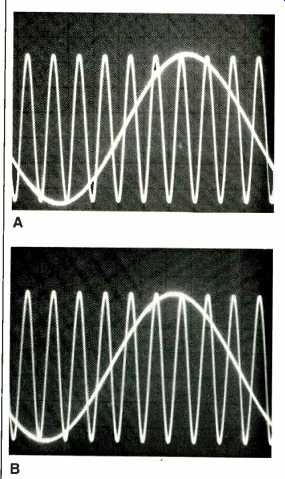
Manufacturer's Specifications:
Frequency Response: 5 Hz to 20 kHz, ±0.5 dB.
THD: 0.005%.
Dynamic Range: 90 dB.
S/N Ratio: 90 dB.
Number of Programming Commands: 16 (see text).
Channel Separation: 85 dB.
Line Output Level: 2.0 V.
Access Time: 2.6 S.
Power Requirements: 120 V, 60 Hz.
Dimensions: 13.8 in. W x 2.8 in. H x 10 in. D (35 cm x 7.1 cm x 25.4 cm).
Weight: 14.3 lbs. (6.5 kg).
Price: $499.
Company Address: 800 West Artesia Blvd., Compton, Cal. 90220, USA.
With all of the "me too" CD players currently available, it has become difficult for a company to come up with a player offering something different from the rest. Akai, however, has managed to do just that with a new, extremely easy and logical way to program via the "Unique Program Order Selector," a main feature of their CD-M88.
The front panel of this mid-sized CD player is equipped with the usual numeric keypads for designating desired tracks and even index points within a given CD selection (if such index points have been encoded onto the disc). But, in addition, there are keys labeled "To," "And" and "Without." The addition of these extra buttons on the front panel makes for a simpler layout while adding versatility to the way in which programming can be done. Suppose you were playing a CD that had 20 tracks and wanted to hear tracks 1 through 5 as well as tracks 10 through 20 but omitting track 17. With most programmable players, you'd have to key in at least 15 individual numbers-assuming the deck was able to accept that many individual instructions. With the Akai CD-M88, you would press the following keys in the following order: "1," "To," "5," "And," "10," "To," "20," "Without," "17." Reading that back as a complete sentence, it makes perfect sense, doesn't it? Other features of the Akai player include direct access to any given track, full-function wireless remote control, repeat play of a specified portion of a track or tracks, and repeat play of an entire disc. It is possible to have a disc repeat-play up to 99 times!
Control Layout
At the extreme left end of the front panel is the usual slide-out disc drawer. Just below are a phone jack and an unusual output-level control. Instead of being adjusted by a protruding rotary knob, this control is configured as a flush-mounted disc which has two tiny bumps on its flush surface.
As your finger tip touches it, there's enough friction between your finger and the flat, flush-mounted knob to enable you to twist the disc and thereby adjust for more or less output level.
An elaborate and informative fluorescent display, also situated below the disc drawer, shows track and index numbers, time elapsed for the current track and total elapsed time from the beginning of a disc. In addition, al programming instructions are displayed as they are entered, including the novel "To," "And" and "Without" designations as well as "Repeat" notations when applicable. A "Display Select" button adjacent to the display area is used to choose the various track or time displays in sequence.
The "Power" on/off and the disc drawer "Open/Close" switches are near the center of the front panel, while further to the right are the disc operating controls: "Play," fast forward and reverse, and "Pause/Reset" (stop). Bridging the first three controls is an unusual acronym-"IPLS" which took a fairly careful search in the owner's manual to locate. On page 12 I finally discovered that it stands for "Instant Program Location System," by which Akai means that the beginning of the previous, the current or the next selection on the disc being played can quickly be selected by pressing the play button simultaneously with either re verse or fast forward. This method of advancing or reversing the laser pickup, though unusual, reduces the number of front-panel controls, an important consideration for a CD player in the mid-sized category.
All of the remaining touch controls at the right end of the panel are involved with programming for specific play routines. Here are found the numeric keys as well as the repeat key, the index key, and those special "To," "And" and "Without" keys. The routine needed to get to a specific track at the beginning of play is a little unusual. Instead of just keying in the track number and then (perhaps) pushing the play button, you treat this request as if it were part of the Akai's programming routine, first keying in the desired track and then pressing the separate "Program Start" button.
Having become accustomed to the other approach, which is used on most machines, this took a little getting used to.
On the other hand, when doing multiple-programming of tracks, the more-logical routine of the Akai's special word keys more than made up for the differences in the CD-M88's single-track access procedure.
Measurements
Frequency response of the Akai CD-M88, shown in Fig. 1, was flat to within the claimed ± 0.5 dB over the entire audio range. A slight rise in response near the high end suggests that the steep analog filters employed after D/A conversion may not have been precisely optimized for the impedance into which they were terminated. Still, the rise amounted to no more than 0.5 dB in one channel and 0.4 dB in the other. Bear in mind that the vertical scale in Fig. 1 is only 2 dB per division.
As with so many other players, the apparent "high" harmonic distortion readings observed when checking THD of high-frequency signals (16, 19, and 20 kHz) on my test disc are not really the result of harmonic-distortion components.
This is obvious if you look at the spectrum-analysis photo of Fig. 2, in which the sweep extends from 0 Hz to 50 kHz. The large spike near the left is the desired 20-kHz test-signal output, while the lower amplitude spike is a "beat" occurring at around 24.1 kHz. Figure 3 shows harmonic distortion versus frequency for three different recorded levels, but the measurement is valid only to around 10 kHz. That's why I used dashed lines above this frequency, to show that the sudden rise in apparent THD is really caused by the appearance of those out-of-band "beats." Unweighted signal-to-noise ratio measured 92.7 dB (greater than Akai's claimed 90 dB), while the A-weighted measurement was an even higher 99.0 dB (see Figs. 4A and 4B). SMPTE-IM distortion measured 0.005% at maxi mum recorded level, increasing to 0.055% at-20 dB re corded level. CCIF-IM distortion (twin-tone, using 19- and 20-kHz tones at the equivalent of highest recorded level) measured a very low 0.0028% at maximum recorded level and 0.003% at-10 dB recorded level. Stereo separation, plotted as a function of frequency in Fig. 5, ranged from 81.4 dB at the high-frequency extreme to 85.4 dB at mid frequencies.

Fig. 1--Frequency response, left (top) and right channels.

Fig. 2-Frequency sweep from 0 Hz to 50 kHz shows "beat" output at
24.1 kHz to the right of 20-kHz signal.

Fig. 3--THD vs. frequency at three signal levels. (High-frequency dashed lines
indicate super-audible beats; see text.)

Fig. 4--S/N analysis, both unweighted (A) and A-weighted (B).

Fig. 5-Separation vs. frequency.

Fig. 6--Reproduction of a 1-kHz square wave.
Fig. 7--Single-pulse test.

Fig. 8--With a 200-Hz signal on left channel and a 2-kHz signal on right (A),
little or no phase shift is observed. Using 2- and 20-kHz signals, considerable
time delay is noted (B).
Reproduction of a 1-kHz square wave by this player is shown in the 'scope photo of Fig. 6. I was surprised to discover that Akai is still using so-called analog (or sharp cutoff, "brick-wall") filters at the output of the player's D/A converters, whereas most other second- and third-generation CD players have gone over to digital filtering and oversampling. As I've stated on several occasions, many listeners will probably be unable to tell the difference be tween these two approaches, but there are those who do prefer the digital filtering approach and can hear a slight improvement in sound quality when it is used. The appearance of the unit pulse in Fig. 7, as reproduced from the Philips test disc, further confirms the use of analog filtering in this player's D/A circuitry.
As is true of most recent CD players, the Akai unit had no trouble tracking through the simulated-defects disc. The CD-M88 totally ignored the widest portion of the opaque wedge inscribed on that disc as well as the increasingly wide "dust" specks and the simulated fingerprint smudge.
Resistance to mild vibration and external shock was even more gratifying, for the unit continued to play without missing a beat every time it was tapped on its top or sides. The smaller size of this player seems to make for a sturdier and more shock-resistant housing.
Use and Listening Tests
The Akai CD-M88 is a pleasure to use. Programming is easy and logical, whether performed at the front panel or by means of the wireless remote control (which duplicates all of the programming and disc-transport controls). As for sound quality, if it didn't quite measure up to the level of more expensive CD players or those that use digital filtering and oversampling, it was certainly acceptable.
The chief attractions of this model, to my mind, are its great programming flexibility and the fact that a user doesn't have to take a long course to learn how to operate it. At a suggested retail price of just under $500, this Akai CD player should find favor with many music lovers who aren't as interested in technical circuit details as they are in functional integrity and good human engineering.
-Leonard Feldman
[adapted from: AUDIO magazine/Mar. 1986]
Also see: Akai CD-A70 Compact Disc Player (June 1987)
[adapted from Audio magazine]